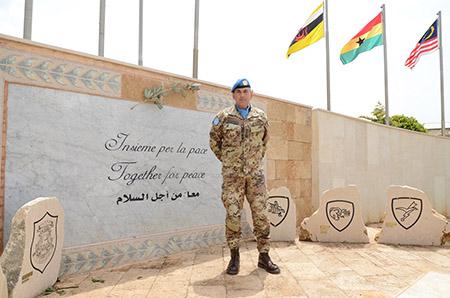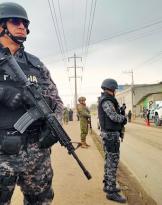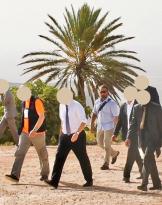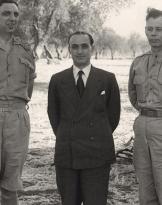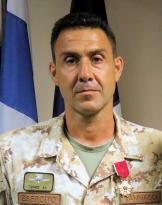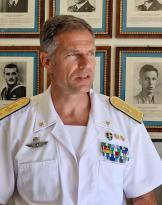As part of the "Leonte XVII" operation at UNIFIL (South Lebanon - Sector West), the Combat Service Support Battalion of the Joint Task Force Lebanon carries out, with its own assets, innumerable operational, logistic, health and support activities. activities aimed at civil-military cooperation.
The same CSS BN ensures logistic movements by land and sea for personnel, means and materials of the national contingent.
The commander, Colonel Francesco Saverio Saiardi, made himself available to explain to the readers of Defense Online the activities he directed in the Land of the Cedars.
Col. Saiardi, what is the logistics organization of the Italian contingent in Lebanon?
The composition of the logistic device of the theater of operations in Lebanon consists of a theater logistics command, which includes the Aderenza1 Support Group (GSA) and asset management, from the Combat Service Support (CSS) structures framed in the national Task Forces, from the Administrative Center of Intendancy 2 (CAI), including the UN reimbursement cell, from the Infrastructure Management Center (IMC) and, finally, from the Joint Multimodal Operations Unit3 (JMOU).
What are the tasks assigned to your unit?
 The Combat Service Support Battalion, part of the Joint Task Force Lebanon Sector West, provides logistical support to the national contingent in Lebanon, guaranteeing a continuous connection with the Transit Logistics Area (ALT), identified by the port and airport of Beirut. Furthermore, the unit is also responsible for the logistical support to the Slovenian, Armenian and Serbian contingent, in compliance with the relevant Technical Agreements (TAs), signed by Italy with their respective governments. The task was accomplished by creating a robust and flexible logistics structure, able to guarantee support to all national and international units. All support activities are guaranteed in compliance with the procedures set forth in the Memorandum of Understanding4 (MOU). Therefore, the logistic support is guaranteed by the constant supply of materials belonging to all classes (eg food, water, spare parts, ammunition, etc.), transport activities and maintenance of all parks, as well as health activities and those of psychological support in favor of all the national Task Forces in Lebanon.
The Combat Service Support Battalion, part of the Joint Task Force Lebanon Sector West, provides logistical support to the national contingent in Lebanon, guaranteeing a continuous connection with the Transit Logistics Area (ALT), identified by the port and airport of Beirut. Furthermore, the unit is also responsible for the logistical support to the Slovenian, Armenian and Serbian contingent, in compliance with the relevant Technical Agreements (TAs), signed by Italy with their respective governments. The task was accomplished by creating a robust and flexible logistics structure, able to guarantee support to all national and international units. All support activities are guaranteed in compliance with the procedures set forth in the Memorandum of Understanding4 (MOU). Therefore, the logistic support is guaranteed by the constant supply of materials belonging to all classes (eg food, water, spare parts, ammunition, etc.), transport activities and maintenance of all parks, as well as health activities and those of psychological support in favor of all the national Task Forces in Lebanon.
Logistics is synonymous with planning. How did you plan logistic support?
The planning activity of the logistic support has been guaranteed by the cells that make up ADERLOG FW, the beating heart and the mind of the logistic adherence in the theater. In particular:
the maintenance cell has planned the preventive maintenance activities and the clearing of the materials, managed the processing surpluses of the Combat service support structures included in the national Task Forces and planned the interventions of the contact teams.
The supply cell has ensured the steady flow of supplies from the motherland support organs. The flow of supplies has remained
constant and, in particular, that of spare parts, adequate to guarantee the execution of both preventive and corrective measures. The materials that are not readily available at the supply offices of the Logistics Support Sector have been supplied, where urgent, to free trade, in Italy and in Lebanon.
The movement and transport unit monitored the movement and guaranteed the transport of supplies from the Transit Logistics Area to the bases in the area of responsibility.
Finally, the C4 cell dealt with the same activities carried out by the maintenance and supply cells, but with reference to the transmission fleet of the entire national contingent.

With regard to the planning of food supplies, the centralized food supply has provided for the supply of foodstuffs, gravitating on two supply lines, one of which is directly guaranteed by UNIFIL and the other, for the national food quota, through a Italian supplier.
From Lebanon 1978 to Lebanon 2015. How has the logistics of the Armed Forces evolved in missions abroad?
The logistic term originates from "logòs", from the Greek "order" or "word", but also logic. Logistics has evolved from mere provisioning support to inventory planning. Alexander the Great would not have created the Persian Empire if he had not had a logistic apparatus adequate to the greatness of the army that followed him. The Romans made logistics a discipline, introducing in the legions the specialization of the logist, as responsible for supplies. The ambition of logistics is to put order in complexity.
It has been a long time since then, from a field limited to the military field, the logistics discipline passes, after World War II, to a wide application also in the economic and industrial sector. Today we talk about Integrated Logistics, declined in different ways, but the synthesis is always that represented by 3 W: What, Where, When, that is to have the right equipment, in the required place and at the time provided (supply chain).
Hence the need to have an Integrated Logistic Support (ILS5), as a logistic acquisition model of a complex system that includes and manages, with the necessary interrelationship, the primary system support project (the physical object of the acquisition, eg a tank), the design of the elements of the logistic system and the technical activities for conducting the service phase. The purpose is to:
minimize the management costs of all logistics activities (maintenance, supplies, inventory management, warehouses, transport);
guarantee high availability for systems use.

The ILS can not disregard a precise balance between performance characteristics (reliability, maintainability, testability) and resources necessary to reach them (infrastructures, spare parts, specialized personnel, equipment, manuals, training, etc.).
The state of the art of integrated logistics is "focused logistics": sense and respond. Needed by the asymmetry of conflicts and, therefore, the support and the globalization of operating theaters, understood as the fusion of information, logistics, technologies and means of transport to provide rapid responses during crises, to track and, if necessary, hijack the assets are already moving, and to deliver logistics packages designed to support operations
Today the logistics community is moving towards a 'Net Centric logistics support ". In this model, the logistic community will represent the "key provider" for most of the information skills necessary for the user, therefore: rapid responses and distributions, information merger and total asset visibility, specifically adapted forces and logistics packages, interforce management in the theater of operations.
Based on your proven professional experience, how has the figure of the military logist evolved over the years?

Today we are witnessing a vicious circle in which, due to the increasing complexity of the weapon systems, complexity understood as the intrinsic capacity of the systems to perform different operational tasks according to the more or less predictable scenarios of asymmetric conflicts, the Life Cycle increases. Cost These costs, if not adequately supported with funds allocated to the financial year, can cause an exponential decrease in the availability of the systems, directly proportional to the age of the same. The challenge to face and to win is therefore to intervene on operating costs, therefore on the Life Cicle Cost, in order to increase availability.
In this framework the logisticist, for years, has started to combine engineering and management skills with appropriate technological tools, in order to ensure the valorisation of the data contained in the infologistic tools of the Armed Force.
Can the military logist be considered a full-fledged operative?
I have never felt this dichotomy in the soldier's figure. I do not see a distinction between an operative soldier or a logist, nor an operative activity and a logistic activity. In a theater of operations every single soldier, every single activity, must be understood as operative as oriented towards the success of the mission. The same is true in the national territory where, moreover, men and women of my regiment have been engaged for years in the "safe roads", in Campania, in Calabria and, currently, in Puglia.
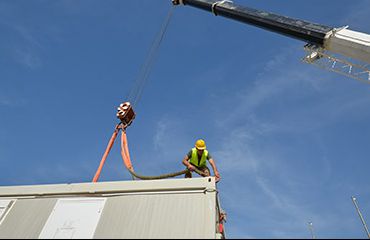
The success of military operations is based on the efficacy of men and means. But effectiveness can not be separated from efficiency and both are inseparably linked to logistical support.
What are the main innovations introduced by military logistics to become increasingly close to the maneuvering units?
For a logist, the man on the ground represents the reason for being. What for an industry is represented by the customer. We need to be oriented towards customer satisfaction. In this, today we are faced with the infologistica, with which we aim to anticipate possible requests, to improve planning and forecasting. Achieving the full implementation of the infologistic applications of Armed Force means, in fact, facilitating management at the level of bodies and departments, identifying objectives and responsibilities, but also allowing an effective gravitation of resources at the level of intermediate and top Commands, as well as optimizing the activity forecasting spare parts and consumables requirements.
From this point of view, decisive tools have proved to be:
the Army Management Information System (SIGE), which uses an integrated computerized network capable of allowing immediate detection of any need and the timely activation of the executive bodies responsible for meeting it.
The Matrix of data interchange with industry (MIDI) as an instrument that guarantees the "informal dialogue" between Industry and the Armed Force, in the context of extended guarantee formulas and during the operating life cycle of the systems. This tool is represented by a software module that constitutes the interconnection element for the mutual supply of identification and technical-logistic data by the industry, connected with the "industrial configuration and maintenance logistic views", and of the logistic data of use by the Armed Force. Furthermore, it accumulates, aggregates and manages the most significant data of the life of a weapon system (reliability, availability and maintainability) and information pertaining to the logistic support throughout its life cycle.

Furthermore, in order to optimize the supply chain referring to spare parts / consumables for commercial and commercial derivative materials and vehicles as well as to "custom development" ones (ie developed on the basis of specific requirements, for example the "Lince" VTLM, VBM
Freccia), in order to maximize the level of service and availability of spare parts while minimizing the costs and times of procurement, storage and distribution to the units, there is a growing use of pre-positioning in the spare part theaters, not only owned of the Defense Administration, but also that provided directly by the Industry which, taking charge of the capital immobilization costs, retains ownership of the materials even if entrusted to the management of the Armed Forces personnel. These more recent forms of collaboration between Armed Forces and Industry are the so-called "Warehouses on consignment" supplied by the companies ASTRA and IVECO. This solution is a tangible proof of partnership between the Armed Forces and Industry, within a broader framework understood as a "country system". Moreover, witness to the goodness of this formula was the particular interest shown by other contingents, especially the Spanish one, with which we share the availability, here in Lebanon, of vehicles produced by pre-established industries, such as VTLM Lince dell'IVECO and the ACTL of the ASTRA.
The S2 (Safety) cell deals with the collection of information and warnings and analyzes its contingent situation by applying the force protection measures for personnel. Currently the head of this section is the major Luca Ciampi assigned to the 10 ° Transport Regiment of Bari,
Lebanon is known to be an area of the Middle East that suffers the influences of what is happening around it. Magg. Ciampi, you who are in charge of security, how does logistics deal with the threat?
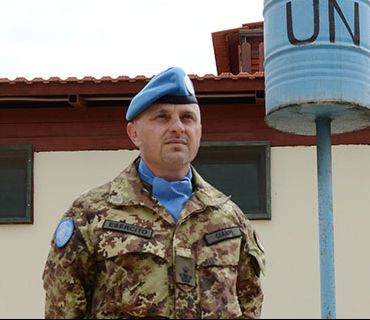 The security organization cooperates in order to be able to identify the threats to which the contingent is exposed during the performance of operational and operational / logistical activities. Today, the nation can count on certainly state-of-the-art mobility facilities that allow all operations, both operational and logistic, to be carried out, with a level of security superior to the past. In Lebanon, the danger is represented by a predominantly asymmetric threat and the introduction into service of state-of-the-art armored vehicles, such as the well-known VTLM Lince and ACTL 4X4 with a protected cabin, certainly contributes to considerably increase the level of safety of the personnel operating on the ground. This type of vehicle, in fact, is the result of a coordinated study between the Armed Forces and the Industry and has translated into the production of means for mobility capable of guaranteeing greater and greater safety to personnel, without compromising their operability and maneuvering capacity. . The development of technology and materials engineering used for the construction of the latest generation vehicles is the result of the experience gained in the field by the maneuvering and logistics units and is constantly evolving, in order to always guarantee maximum adherence to the requirements of safety in the performance of assigned tasks. The development of this engineering is, today, also applied to other types of vehicles, especially logistic ones, such as cranes and trucks for the transport of containers, tankers and tankers. Who knows, maybe in the near future this family of vehicles will find useful employment here in Lebanon.
The security organization cooperates in order to be able to identify the threats to which the contingent is exposed during the performance of operational and operational / logistical activities. Today, the nation can count on certainly state-of-the-art mobility facilities that allow all operations, both operational and logistic, to be carried out, with a level of security superior to the past. In Lebanon, the danger is represented by a predominantly asymmetric threat and the introduction into service of state-of-the-art armored vehicles, such as the well-known VTLM Lince and ACTL 4X4 with a protected cabin, certainly contributes to considerably increase the level of safety of the personnel operating on the ground. This type of vehicle, in fact, is the result of a coordinated study between the Armed Forces and the Industry and has translated into the production of means for mobility capable of guaranteeing greater and greater safety to personnel, without compromising their operability and maneuvering capacity. . The development of technology and materials engineering used for the construction of the latest generation vehicles is the result of the experience gained in the field by the maneuvering and logistics units and is constantly evolving, in order to always guarantee maximum adherence to the requirements of safety in the performance of assigned tasks. The development of this engineering is, today, also applied to other types of vehicles, especially logistic ones, such as cranes and trucks for the transport of containers, tankers and tankers. Who knows, maybe in the near future this family of vehicles will find useful employment here in Lebanon.
Col. SAIARDI, what can be the future developments of the logistic support to the peace missions?
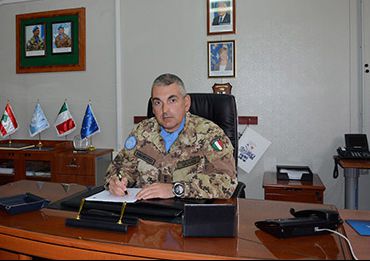
In the constantly changing reality that the Italian Army has been facing in recent years, logistics must be understood not only as the science of planning and conduct of movement and maintenance of forces, but rather in the broader sense of allocation ordered resources. The Italian Army, in order to respond effectively to the increasingly numerous and diversified international commitments, has provided itself with high-tech means and materials that have also imposed an organizational review of the related logistical support.
In order to guarantee operational readiness at a total cost of the life cycle of a system that is as low as possible, it is now essential to shift the objective from the acquisition of goods and services to the acquisition of a predetermined level of availability meet the expectations and needs of those responsible for using the systems themselves.
In times of economic difficulty it becomes more and more important to be able to maintain the operational availability of means, materials and weapon systems at the levels of efficiency suitable to guarantee the effective use of the units. This imposes the need to apply correct technical-logistic management procedures that allow to develop a functional, harmonious and balanced framework in order to express advantageous returns in terms of costs / benefits.
In relation to the aforementioned constraints, the most complex challenge for the Army in the logistics sector is represented by the objective difficulty of making the planning of the logistic support consistent with the ever smaller financial resources specifically allocated in the sector of the exercise. The extreme mobility of the theater of operations and the consequent reduction of the reaction times also of the logistics, entail a radical change in the supply flow models.
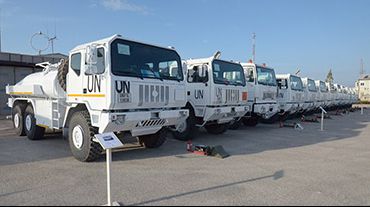
To the traditional "reactive" concept, one must replace an "anticipatory" model that must be based both on the forecasts, in this case operative, and on the concrete situation in the theater at that time. The achievement of focused logistics involves a substantial change in the areas of acquisition of materials, with a more precise definition of what to buy, how to buy and how to support the material so purchased.
The logical transition then sees the original concepts of static logistics such as "just in case" (acquisition of large quantities of material, especially the precautionary parts, to support long-term requirements) or "just in time" (acquisitions based on strict time / cost planning to reduce, but not cancel, fixed assets) to the concept of "sense and respond" (joint logistics planning with operations planning, globalization of the supply scenario, "support" packages) that sees in speed and in the effectiveness of the supplies the essence of the logistics function. The most immediate way to satisfy "sense and respond" requirements is based on the creation of peculiar "packages" for each type of operation that can be predicted so that it is possible to put together and dispose of the materials almost in real time. Focused logistics is based on basic concepts such as:
realization of specific packages; speed and flexibility in deploying forces and distributing packages; integration of the entire communication network and continuous traceability of materials; maintenance criteria that reduce the need for spare parts at the operational level; highest priority to logistic decisions.
It is the future, but we are already living it.
Maria Grazia Labellarte
1 The GSA takes care of the technical-logistic aspects necessary to guarantee the functioning of the Departments in Operative Theater.
2 In CAI it manages the financial aspects connected to the personnel employed in the operation as well as the contracts stipulated in the TO for contingent needs.
3 JMOU is responsible for air, land and sea connections between Italy and the Operating Theater.
4 The MOU is a legal document that sanctions the bilateral agreement between the parties, and expresses the common understanding of the two parts and the lines of action. It does not bind the parties as a contract, and can be kept confidential.
5 Integrated Logistic Support.


